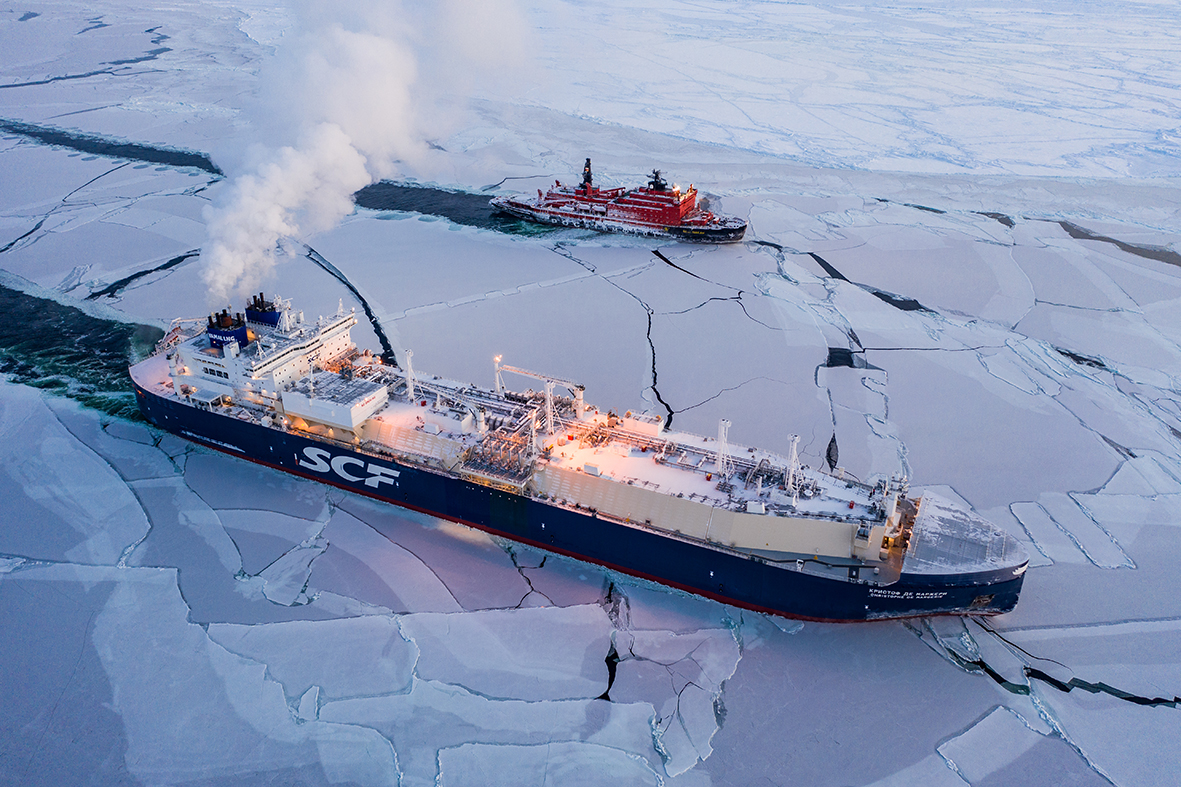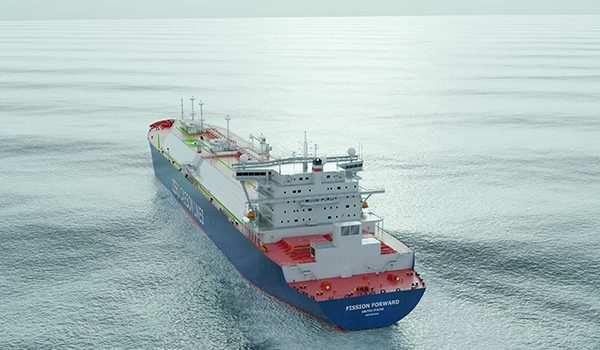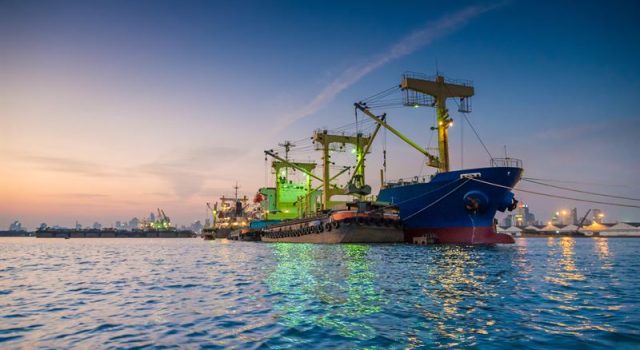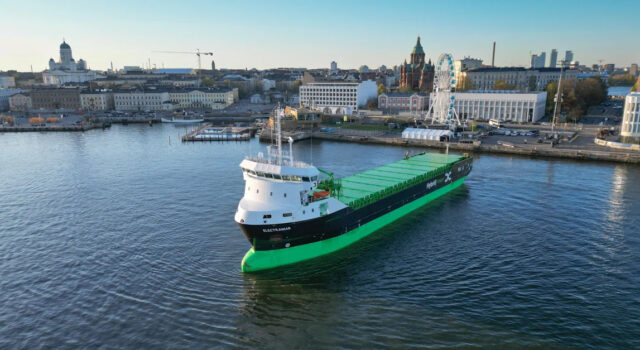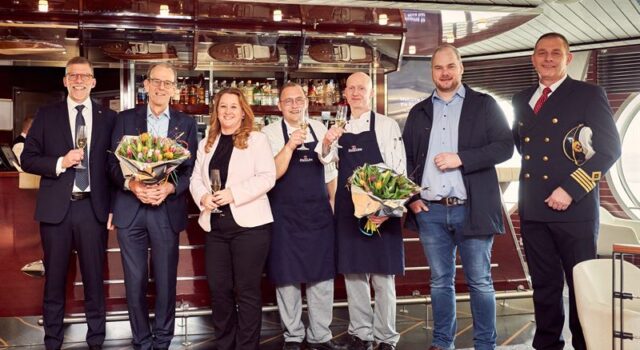The District Court of Stockholm has recently rendered a judgment in a collision case in which Alandia and their insured were the claimant parties. The case concerned a collision in the ice channel while a vessel insured against Hull & Machinery risks by Alandia (‘vessel A’) was being towed by a Finnish icebreaker (‘the IB’), another vessel sailing in the convoy (‘vessel B’) collided straight into the stern of vessel A.
Facts:
Vessel A of 3259 GT and vessel B of 9620 GT were sailing southwards in a convoy, led and assisted by the IB in the Quark area of Bothnian Sea on 19 Mars 2018. Both vessels were sailing from the port of Tornio where vessel B had taken a full load of steel cargo and vessel A was loaded with a project cargo. Vessel A was towed by means of notch towing by the IB whereas vessel B was following vessel A and the IB in the ice channel. Since vessel A was attached to the IB with steel wires she did not have any possibility to navigate or manoeuvre by herself.
The convoy had been proceeding in good weather conditions in the ice channel for about 9 hours without any problems when suddenly the IB encountered an ice ridge. Accordingly, the speed of the IB dropped rather quickly and finally the IB came to a complete stop. Vessel B was sailing in the ice channel with a speed of 9,8 kn only 0,14 nm, about 265 m astern of vessel A. When the speed of the IB was slowing down the IB requested through VHF vessel B to slow down, and then quickly after that to turn away and then to stop the vessel. Vessel B could not turn nor stop the vessel in time but collided into the stern of vessel A with a speed of 7,8 kn. Both vessels suffered damages, but fortunately there were no personal injuries.
Alandia indemnified owners of vessel A under the contracts of insurance after which they together with owners of vessel A turned to owners of vessel B with their recovery claim. Alandia and owners of vessel A (‘vessel A interests’) argued that the collision was caused solely by the negligent of vessel B and thus vessel B was fully liable for all damages and losses caused to vessel A. Vessel A was attached to the IB and could not do anything to prevent the collision from happening.
Since no reasonable settlement could be negotiated with owners of vessel B, Alandia and owners of vessel A had no other alternative but to file an application for summons against the owners and bareboat charterer of vessel B (‘vessel B interests’) at the District Court of Stockholm in accordance with the law and jurisdiction agreement concluded between the parties after the collision. The Swedish law applied.
Argumentation:
Vessel A interests argued that vessel B was in breach of chapter 6 sub-clause 2 of the Maritime Code and rules 2, 6, 7, 8e and 18 a of the Convention on the International Regulations for Preventing Collisions at Sea, 1972 (‘COLREGs’) on the basis of vessel B not keeping a safe enough distance to vessel A in the convoy but was sailing too close to vessel A with too much speed. Vessel B failed to stop or to turn away from the ice channel with the result that vessel B collided into the stern of vessel A causing considerable damages. The master of vessel B had not acted in accordance with good seamanship taking the size of vessel B and the heavy cargo onboard into consideration, when proceeding in an ice-free channel. The master should know his vessel and the manoeuvring capabilities of the same – and it is always the master who is solely responsible for the navigation of the vessel, even if assisted by an icebreaker.
Vessel B interests rejected the recovery claim and argued that there was an industry practice which applied to collision incidents taking place when merchant vessels are assisted by an icebreaker. According to this industry practice both parties would always stand for their own damages and losses resulting from a collision regardless of possible negligence on one or both vessels. In addition, vessel B interests rejected the liability in every respect claiming that there was no negligence on the part of vessel B since they had followed all instructions given by the IB. Vessel B interests also argued that it was not at all foreseeable that the IB could get stuck in ice. Furthermore, vessel B interests argued that vessel A was partly liable to the collision because they had not kept look-out and warned vessel B that she was sailing too close to vessel A.
Findings of the court:
The court first analysed and considered the argument made by vessel B interests that there is an industry practice whereby merchant vessels when in collision with each other during icebreaking assistance would always stand for their own damages and losses despite the possible negligence.
Vessel B interests referred to the evidence according to which whenever an icebreaker is involved it means that all parties stand for their own losses if damage occurs. They could not however give any ground for this statement nor could they refer to any more detailed information. Vessel B interests explained however that parties, owners and insurers are often discussing collisions with each other but no information of contents of such negotiations could be revealed by the witnesses. The court concluded that there was no evidence in support of the argument regarding such industry practice – an industry practice does not evolve by mere settlement negotiations between different parties.
The court then considered the question of whether the collision was caused by the negligence of vessel B and if vessel A had somehow contributed to the collision.
The court first referred to the applicable rules and regulations and confirmed among others that the International Regulations for Preventing Collisions at Sea, 1972 (‘COLREGs’) apply in the Swedish waters – even during icebreaking assistance – contrary to what vessel B interests had argued. The court stated that when considering whether the damages caused to the other vessel through a collision are caused by negligence in accordance with chapter 8 sub-clause 1 of the Maritime Code, the provisions of COLREGS are applied as a starting point together with other applicable national law and regulations of the authorities.
Furthermore, it is the responsibility of the master of a vessel to ensure that the vessel is operated and manoeuvred in accordance with good seamanship as provided in chapter 6 sub-clause 2 of the Maritime Code. The court explained that the definition of good seamanship is not something which is unequivocally and clearly defined but which is merely regarded as a standard for certain skilfulness and diligence of a good seaman.
The court concluded that the requirements for skilfulness and diligence of the master are particularly high in this case where the master was responsible for a larger merchant vessel fully loaded with heavy steel cargo sailing in ice conditions. Even though vessel B was assisted by the IB – only the master of vessel B could know exactly the stop distance of his vessel as well as the other manoeuvring capabilities of vessel B.
The court confirmed that vessel A interests had given reliable evidence of the events before and at the time of the collision. That evidence had a high proof value as such and thus, it clearly showed that the master of vessel B had acted negligently in the circumstances. The court stated in particular that the IB had not given any instruction about the distance to vessel B – the only instructions given by the IB were that vessel B should proceed with maximum engine effect, however with the speed of max 10 kn. Vessel B had been proceeding with only 60 % of her engine effect but still with the speed of 9,8 kn for a longer period of time which clearly showed that the ice conditions were not severe -and there was no risk for vessel B to get stuck in ice.
The court concluded that there was no reason for vessel B to sail that close to vessel A and the IB with such a high speed. It was vessel B who solely decided the distance to vessel A and the IB, as well as the speed of the vessel – not the IB. Furthermore, it was fully foreseeable that the IB could get stuck in the ice ridge.
The court also confirmed that vessels which are being assisted by icebreakers always take instructions from them at their own risk. It is always the master of a vessel who is responsible for the navigation of the vessel. In this case it was clear that the master of vessel B had not adjusted the speed and distance of his vessel in a safe manner so that he could have stopped the vessel in time. Vessel B had negligently caused the collision and was thus liable to pay the damages and losses caused to vessel A. Finally, the court confirmed that there was no contribution on the side of vessel A.
Final remarks:
Icebreaking services in the Baltic sea area are offered by the Governments of Finland and Sweden and managed by the Ice-breaking Division of Swedish Maritime Administration and the Winter Navigation Unit of Finnish Transport Infrastructure Agency in the countries’ respective waters.
The services are offered in accordance with ‘Winter Navigation’ rules and instructions published in both countries for every icebreaking season. All vessels arriving for the first time to the sea areas covered by Finnish or Swedish icebreaking services will be required to accept and commit to follow ‘Winter Navigation’ rules and instructions in order to receive icebreaking services.
The icebreaking administrations and the operative icebreakers will not assume any liability for damages or losses in connection with the services provided. Furthermore, assistance and advice are offered to a vessel at its own risk. Vessels being assisted are solely responsible for their navigation.
An icebreaker may be free from any liability in respect of collisions. However, it must be remembered that this applies only between an icebreaker and a merchant vessel or vessels, never between two or more merchant vessels even though they have been assisted by an icebreaker.
The judgment of the District Court of Stockholm is now final and thus confirms that merchant vessels are solely responsible for their navigation even though they have been assisted by an icebreaker. In the event they are in breach of COLREGS and/or masters are not acting in accordance with good seamanship – they can be acting negligently with the result of that the liability follows.
More information:
Alandia
Tarja Bergvall, Legal Manager
Markus Willman, Claims Executive

